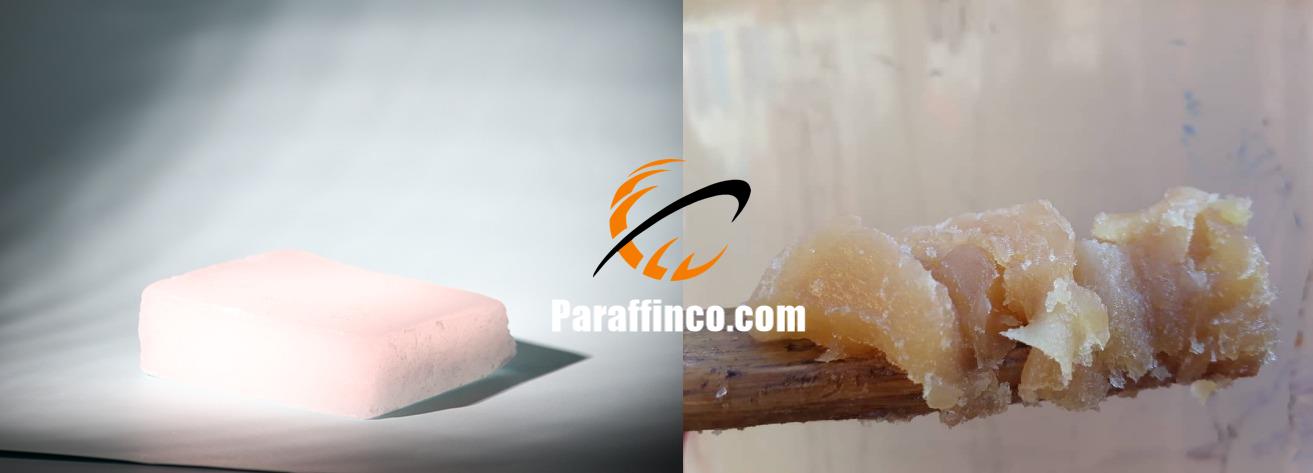Exploring the Differences: Residue Wax vs. Paraffin Wax
Residue Wax Vs. Paraffin Wax, In the world of wax products, two commonly used types stand out: residue wax and paraffin wax. While both serve various industrial and commercial purposes, they differ significantly in their composition, properties, and applications. As a leading supplier of wax solutions, Paraffin Co. offers insights into the distinctive characteristics of residue wax and paraffin wax, helping consumers understand their unique attributes and choose the right option for their specific needs. Paraffin Co. as a trusted supplier of Residue Wax and Paraffin Wax in Dubai, UAE. In this comprehensive blog post, we’ll explore the differences between residue wax and paraffin wax, their respective applications, and the invaluable contributions of Paraffin Co. in delivering top-quality wax solutions to industries worldwide.
Understanding Residue Wax Vs. Paraffin Wax
What is Residue Wax?
Residue wax, also known as Foots Oil, is a byproduct of the oil refining process. It is obtained from the dewaxing of petroleum oils and consists of a mixture of saturated hydrocarbons. Residue wax is characterized by its high oil content and dark color.
What is Paraffin Wax?
Paraffin wax, on the other hand, is a type of wax derived from crude oil. It undergoes a refining process to remove impurities and is composed primarily of straight-chain hydrocarbons. Paraffin wax is known for its white or colorless appearance and low oil content.
Key Differences Between Residue Wax and Paraffin Wax: Residue Wax Vs. Paraffin Wax
- Composition:
- Residue wax contains a higher oil content compared to paraffin wax, making it softer and more pliable.
- Paraffin wax has a lower oil content, resulting in a harder and more brittle texture.
- Color:
- Residue wax typically has a darker color due to its higher oil content and impurities.
- Paraffin wax is white or colorless, with a clean and uniform appearance.
- Melting Point:
- Residue wax generally has a lower melting point compared to paraffin wax, making it suitable for applications requiring lower temperatures.
- Paraffin wax has a higher melting point, providing greater stability and resistance to heat.
- Applications:
- Residue wax is commonly used in industries such as rubber manufacturing, candle making, and cosmetics, where its softer texture and higher oil content are beneficial.
- Paraffin wax finds widespread use in candle production, food packaging, pharmaceuticals, and cosmetics, where its clean appearance and low oil content are preferred.
Applications of Residue Wax and Paraffin Wax
Residue Wax Applications:
- Rubber Manufacturing:
Residue wax serves as a softening agent and processing aid in rubber compounds, enhancing flexibility and workability. - Candle Making:
Its higher oil content makes it suitable for use as a base material in candle production, providing structure and improving burn characteristics. - Cosmetics:
Residue wax is used in cosmetics such as creams, lotions, and lip balms for its emollient properties and ability to soften and moisturize the skin.
Paraffin Wax Applications:
- Candle Production: Paraffin wax is widely used in candle making due to its clean-burning properties and ability to hold fragrance and color.
- Food Packaging: It is used as a coating for food packaging materials to provide moisture resistance and extend shelf life.
- Pharmaceuticals: Paraffin wax is used in the formulation of ointments and topical treatments for its emollient and barrier properties.
Paraffin Co. as a trusted supplier of Residue Wax and Paraffin Wax in Dubai, UAE
- Quality Assurance:Paraffin Co. adheres to stringent quality control measures to ensure the highest standards of purity and consistency in its wax products.
- Versatility:Paraffin Co. offers a wide range of residue wax and paraffin wax products tailored to meet the diverse needs of industrial and commercial clients.
- Technical Expertise:With extensive experience in wax production and formulation, Paraffin Co. provides valuable technical support and guidance to help clients optimize their processes and formulations.
- Reliable Supply Chain:Paraffin Co. maintains a reliable supply chain network to ensure timely delivery of wax products to clients worldwide, minimizing disruptions and downtime in operations.
Conclusion
Residue Wax Vs. Paraffin Wax, Residue wax and paraffin wax are two distinct types of wax products, each with its own unique properties and applications. While residue wax offers a softer texture and higher oil content, paraffin wax is prized for its clean appearance and lower oil content.
With Paraffin Co. as a trusted supplier of Residue Wax and Paraffin Wax in Dubai, UAE, industries can access top-quality residue wax and paraffin wax products tailored to their specific needs, ensuring optimal performance and reliability in their applications.
If You have any other Query or Question you want to ask, Please don’t hesitate to Contact Us

